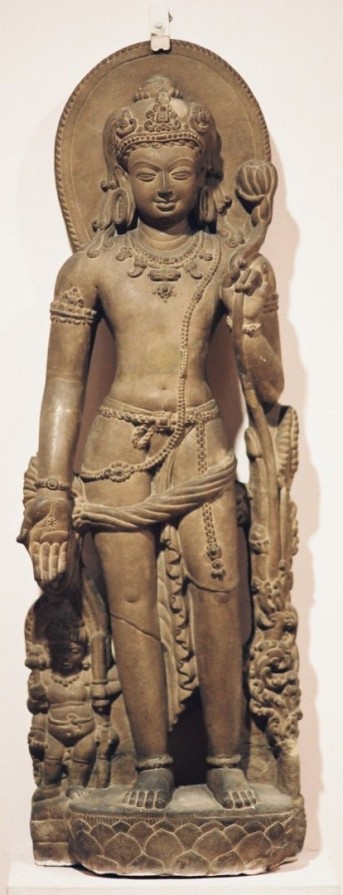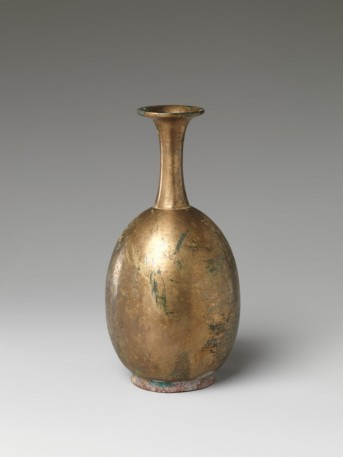China, Tang dynasty, late 7th–8th century; gilt leaded bronze, piece-mold cast; H. 9 1/6 in.; The Metropolitan Museum of Art, Fletcher Fund, 1933, 33.91, photo: www.metmuseum.org.
This small gilt-bronze Chinese sculpture probably once stood on a home altar, the object of private worship. It is Guanyin—a Chinese manifestation of Avalokiteshvara—and its iconography derives from India. Amitabha sits on the bodhisattva’s crown, and the figure carries his typical ambrosial vase. Yet the Chinese bodhisattva departs stylistically from South Asian precedents. Indian versions of Avalokiteshvara are weighty and firmly situated on the earth. In contrast, Guanyin’s thin, animated scarves lend the figure a light, diaphanous quality. This transforms the bodhisattva into a more ethereal being, who—by the Tang dynasty (618-907)—plays an important role in Chinese Buddhism.







